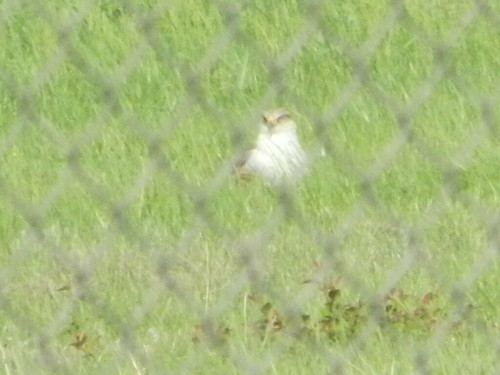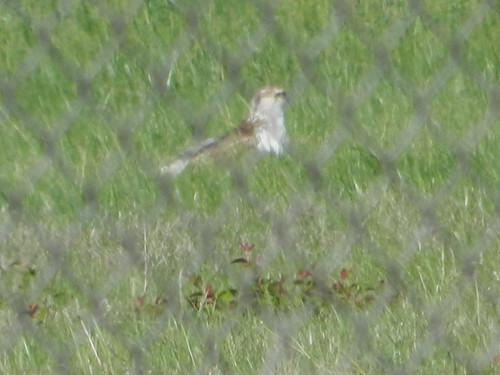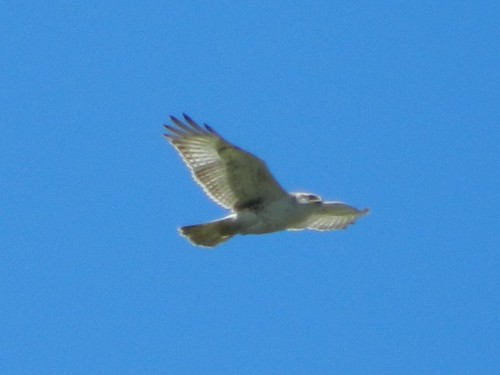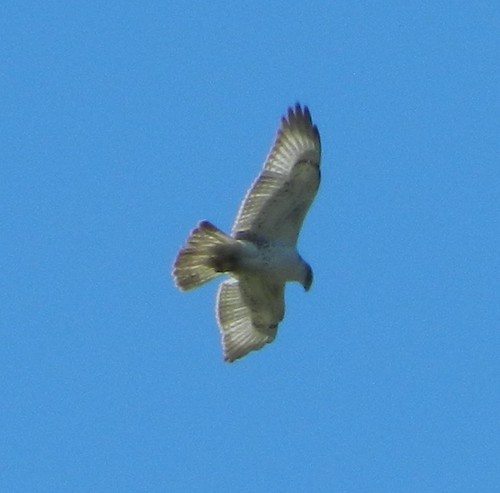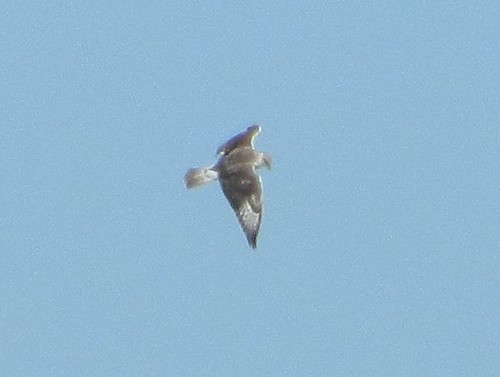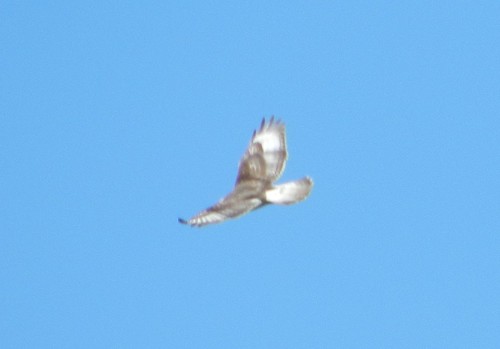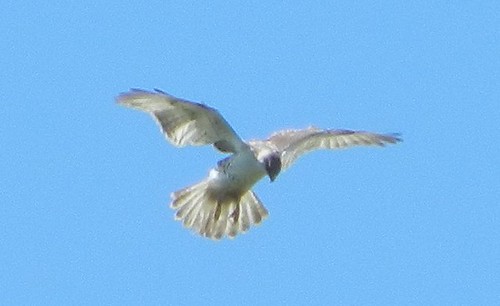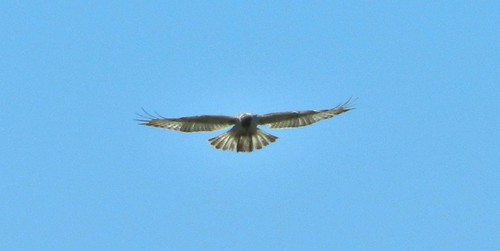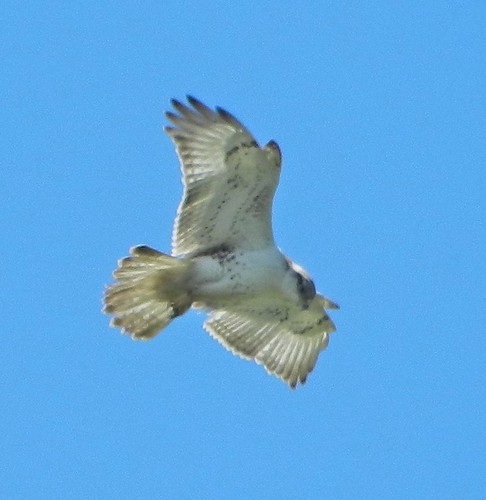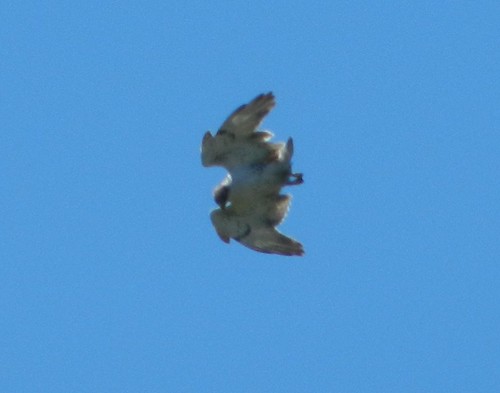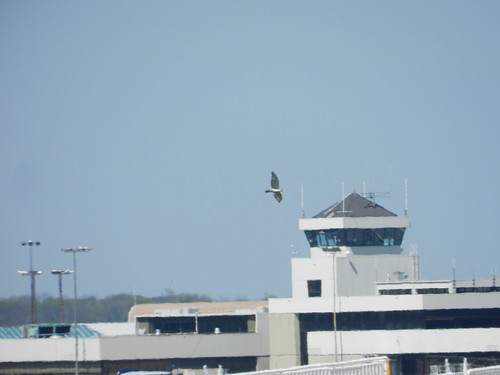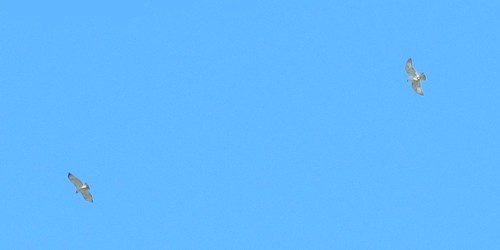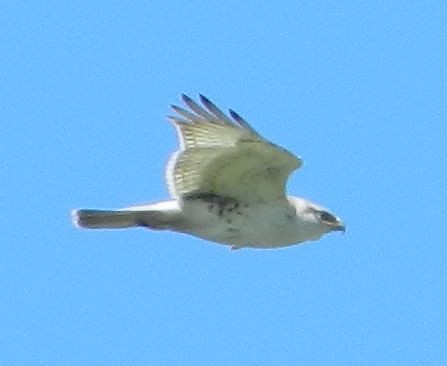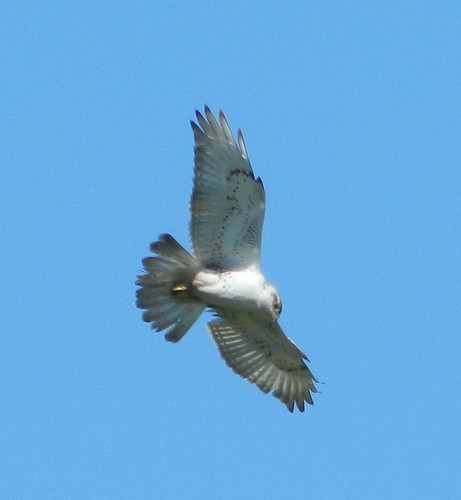Below is a photo of my microphone setup, and Oldbird 21c microphone system. Eventually I will mount this on my roof, but for now it is on a chair in my backyard.
I have an audio cable running from the microphone to my laptop inside, and use Easy Hi-Q Recorder to automatically record all night from 9pm to 5:30am.
Then I use Tseep detector and Thrush detector software to scan the 8.5 hour recording and create short clips of possible bird sounds.
I then use GlassOFire to create spectrograms of these sound clips so I can look at them and quickly delete those that aren't actual bird calls.
That leaves me with a collection of bird call spectrograms and the fun really begins as I try to identify them. The best resources I've found so far for this include:
- Flight Calls of Migratory Birds CD--a must have guide to the flight calls of eastern North American songbirds.
- Bird Calls and Songs website--lots of audio of mostly eastern U.S. birds, including flight calls.
- Nightmigrants.com--more clips and spectrograms for comparison.
- Call Notes and Flight Calls website--more call recordings from New York.
Each night I can listen to the recording in progress, until I get too tired and head to bed. In the morning I analyze the calls and begin to sort and identify them. Migration is just starting to really get started here in western New Jersey, and we've had many nights of north winds and very little migration. Most nights I get just a handful of calls, but some nights have had over a hundred calls. It should get even better in the next couple of weeks.
So what have I found so far? How about a bird that I would never otherwise get on my yard list--Virginia Rail. I actually recorded this bird twice in mid April!
 |
| Presumed Virginia Rail call |
Most of the calls I've been getting so far are sparrows. Mostly White-throated Sparrows. I'm becoming quite fond of this nice squiggly double line, the signature White-throated Sparrow spectrogram.
But I've also starting to get some Grasshopper Sparrows and Savannah Sparrows--grassland birds that might never land in my yard, and I would be hard pressed to get on my yard list any other way.
Here are a few of the warbler calls I'm starting to get.
 |
| Presumed Hooded Warbler call. |
After 30 years of birding, exploring this world of flight calls and squiggly spectrograms is like starting birding from scratch--it is a whole new world and while we've learned a lot about these calls, the study of night flight calls and nocturnal migration is still in its early stages--there is a lot to learn.
So, what is flying over your house tonight? Perhaps you'll want to get yourself a microphone as well and join in the fun. In addition to adding new birds to your yard list, you can develop a whole new appreciation for bird migration, learn some new state of the art bird ID skills, and perhaps even contribute new findings to this exciting and fledgling branch of ornithology!
































